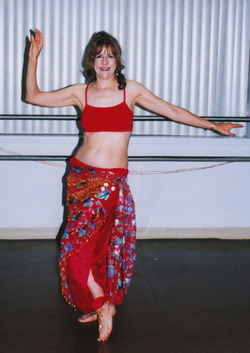
As in the real estate profession, location, location, location is important. If the class is closer to your residence, the more likely you are to attend the class. This is especially true during the region’s long winter months.
What day suits you best? Do you prefer a weekday or a weekend? Does it interfere with you choir practice, your children’s sport commitments? What day or evening do you have a babysitter?
Another consideration is the start and end time of the class. Is it taking place right after work or after dinner? Are you a morning person or a late-night person? When do you have the most energy and are most likely to attend a dance class? Most classes run an hour or so.
Cost is, of course, a factor. It is generally less expensive to sign up for a complete session (and one is more likely to attend if in a long-term commitment). Most dance sessions run from 4 to 8 weeks with one class per week. Depending upon location, classes can be included in your gym membership, be a minimal $5., the average being around $10 per class in this area. Group classes are less expensive that private lessons. In places like Philadelphia and New York City, classes are much more.
What is your goal? Is it purely for fitness? Fun? To learn a new skill? To expand your dance horizons? To become a professional? This will determine the type of class environment you would thrive in. A “Beginners” class would suit most who are unfamiliar with this unique dance form. Also, one must understand that progress depends upon past experience and natural ability. Beginner classes focus on newbie’s. Plus, it's not a bad idea to take a beginner's class more than once to improve technique.
The instructor can determine whether or not the class is for you. Realistically, a dance student should study with as many different instructors as possible to experience different teaching and dance styles. Some instructors teach step-by-step technique, others “follow-the-leader” and others using only choreography. Only you can determine what style of learning suits you. The best way to discover this is to take a trial class. Most instructors allow a prospective student to sit in or try one class as an introduction before committing.
Instructors vary in experience. Being a good dancer doesn’t always denote being a good instructor and vice versa. Of course, length of study, workshops attended, famous names, length of dance experience count. Just remember that every dancer, no matter how many years they have studied and danced, doesn’t know everything and isn’t always right. Beware of "six-week wonders," an instructor who took one or two belly dance sessions and considers herself an expert. Dancing is a lifelong learning experience and your instructor should be a student of the art form as well. Lately, there is a trend in the belly dance world toward earning credentials. Several famous dancers offer workshops culminating in a certificate of completion, a credential. Though the dance knowledge gleaned is beneficial, in my opinion, credentials mean nothing as to overall ability. The other trend is toward standardization of belly dance to give it the “legitimacy” of ballet. I personally beg to differ since belly dance is an ancient dance form that has evolved and will continue to evolve through the ages. To me, educating the public as to what it is versus what it is not is far more important. It is a dance of self-expression. Turning the dance into a mechanical act, another trend, takes away from its joyful purpose. Dance should be fun and you should experience the joy in a dance class. There shouldn’t be undue pressure, sense of competition, grading or fear.
Where to take the class? There are various options. Your fitness studio or YMCA may offer classes. Many community recreation and adult education catalogs offer the dance. Colleges and universities often offer belly dance at their recreation centers, as part of continuing education classes or even for credit under fitness or dance programs. Dance studios often include belly dance as part of their programming.
As one progresses, workshops and seminars offer additional training with some of the world’s leading dancers and dance authorities. The best part is that you can be a beginner to attend.
Yes, there are reliable DVD’s on belly dance, some better than others. I see these as supplements to a real dance class. I believe that the interaction of women learning and dancing with women creates the authentic atmosphere for the dance.
Okay, now, get ready, get set and go … to your nearest dance class!
 RSS Feed
RSS Feed